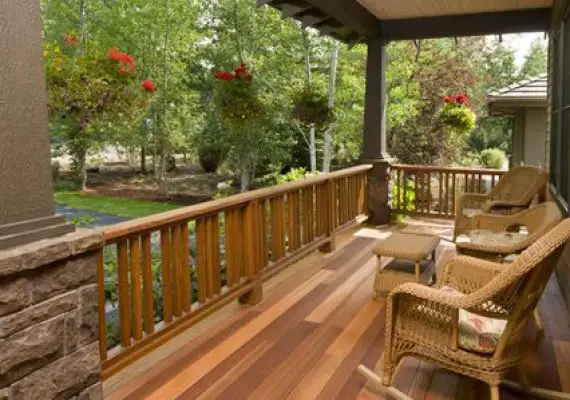What Are Staircase Stringers?
What Are Staircase Stringers?
Stair stringers are the vertical support boards or structural members that run along either side or in the center of a staircase.
They provide a framework and load-bearing support for the treads and risers. Stringers may be made of solid wood lumber, pressure-treated lumber, timber, LVL, and many other types of building materials.
There are two common types of stringers for stairs in residential buildings: cut stringers (also known as open or sawtooth stringers) and mono stingers (which use a single but heavy-duty stringer beneath the center of the treads).
The stringer fascia is the finished surface on the inside vertical surface of the stringer, while the stringer capping is the finished surface on top face of a western style stringer.
Merriam-Webster defines a stringer as “a long horizontal timber to connect uprights in a frame or to support a floor”.
What Is Another Name For A Stair Stringer?
Another name for a stair stringer is a cut jack, frame, rough carriage, or notched stringer. Open stringers are also referred to as cut or sawtooth stringers, while a variation of the mono stair stringer is a twin stringer.
Other terms used to refer to stair stringers include carriages, jacks, and skirt boards.
A baluster may also be referred to by the nickname spindles, while in some Southern regions of the US, balusters are also referred to as pickets.
The rail is the part of the railing system that you touch with your hand as you go up and down a stair.
What Material Is Used For Stair Stringers?
The most common material used for stair stringers is pressure-treated 2×12 lumber. This type of lumber is straight, high-quality, and designed to withstand outdoor conditions.
Other materials that can be used for stair stringers include steel, aluminum, and various types of wood such as oak, maple, walnut, and engineered wood.
Primed Laminated Veneer Lumber (LVL) is also a popular choice for stair stringers as it is an engineered wood product with a smooth paintable surface.
What Is The Distance Between Stair Stringers?
The recommended distance between stair stringers is no more than 16 inches on center. This means that for a normal deck step, two stringers should be placed no more than 16 inches away from each other.
If cut stringers are used in the stair construction, then at least three stringers should be installed and if the stairway is wider than 36 inches, four stringers should be installed. Stringers should also not span more than 13 feet and 3 inches (4039 mm) for a closed stringer.
Additionally, stringers should be spaced no more than 36 inches apart from each other for maximum stair support.
What To Consider When Designing A Stair Stringer?
Design considerations for staircase stringers include the number of stringers required, spacing between stringers, structural performance issues, connection of the stair stringer to the supporting structure, deflection limits, and sloping beam method versus horizontal plane method.
Cut stringers should be spaced no more than 18 inches on center. For example, a 36-inch-wide stairway should have three stringers.
If the stairway is wider than 36 inches, four stringers should be installed.
Structural performance issues of stair stringers in residential buildings can range from cracking of the cosmetic finish and vibrations to major structural failures.
Stair stringers should meet general construction standards except where amended by local jurisdiction.
There are two common types of stringers for stairs in residential buildings: cut (or open or sawtooth) and closed (or boxed).
A critical issue for wood-framed stair construction is the connection of the stair stringer to the supporting structure.
Deflection of stair stringers is largely ignored in typical construction but code required limits should be applied.
The sloping beam method and horizontal plane method can also be used to analyze a typical wood-framed stair stringer configuration.



